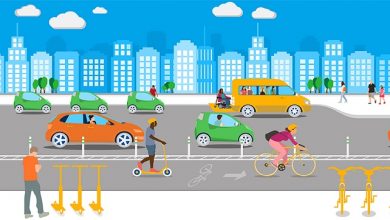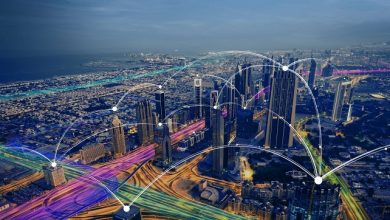Intelligent Tech Platforms for Smart City and Smart Citizenship

The global trend of urbanization
As the World Population Prospects 2019 elaborated by United Nations clearly shows, projections illustrate that urbanization, combined with the overall growth of the world’s population, could add another 2.5 billion people to urban areas by 2050, with close to 90% of this increase taking place in Asia and Africa.
There is a sequence of numbers that may help us better understand the extent of the epochal change that we are experiencing: 2, 50, 75 and 80.
Nowadays, cities cover approximately 2% of the Earth’s surface, host 50% of the global population, represent 75% of the energy consumed and 80% of the carbon dioxide emitted. It follows that if we want to achieve the climate targets on the scale of the whole planet, we have to change our cities.
So cities are evolving faster than ever. The effects of these structural transformations are evident: denser populations, increased traffic congestion, related air and noise pollution, progressive reduction of urban spaces, higher levels of stress perceived in people’s lives.

The demographic size of the city is obviously a crucial factor. As we learn from the history of the evolution of city, it is the quantity that has contributed to develop the idea of quality and functions specialization: inventions and facilities were created precisely out of the need to provide for the survival of a considerable number of more and more people.
This happened with the great amount of systems composing the network infrastructure which are well known to everyone: from construction of the Roman aqueducts, roads sidewalks and bridges (i.e. the mobility infrastructures), means of transport, sewers, electricity, water, heat, communication system, parks, buildings, restaurants, shops, museums, up to contemporary factories. The functionality of an ecosystem is highly dependent on the connection and integration of all these multiple systems.
In this regard, the idea of a city at the service of the citizen able to offer him ever greater facilities for carrying out his daily life has always been a Leitmotiv in the history of the evolution of the city. To some way, the evolution of cities has always been a history of smart cities, namely, cities intelligent because able to satisfy citizens’ needs.
The smart city, then, as the urban environment that aims to ensure the wellbeing of its citizens, guaranteeing safety, continuity, accessibility, practicality, and economy. It is an intelligent city but also reliable and welcoming.
The philosophy of the Smart City: a “dance of interacting parts”
Smart city future takes on a broader meaning: smart is generally understood as synonymous with technologically advanced, that is, it concerns the use all digital technologies, especially the Internet of Things, big data, and Information and communication technologies (ICT) to improve urban life.
The smart city therefore is based on the interdependence between three fundamental dimensions: the social actor, the physical space, and the network infrastructure.
From this point of view, the introduction and pervasiveness of the new digital technologies is such as to generate a highly complex urban ecosystem that requires collaboration between different disciplines starting from those focused on space (architecture, urban planning), on technology (engineering informatics and electronics), and on social relations (human sciences in general).
What characterizes the current smart city philosophy from that of the past is the time factor.
Advanced digital technologies, using communication flows and a distributed and shared IT infrastructure, can in fact help us to quickly find answers to our manifest needs (requests) – and latent ones through pragmatic solutions, or the services provision. The process time, i.e. the processing time of a certain input in a precise output, is decreasing more and more until it reaches almost simultaneity.
This is made possible because every modern system is composed of many sensors to observe the environment (collecting data) and actuators to influence this environment. For the first time in history, according to the IoT (Internet of Things) paradigm, homes, buildings, applications, all kind of vehicles, smart phones and any other technological devices are starting to dialogue with us thanks to the complex sensors and connectivity apparatus, allowing moreover remote monitoring and control.
The billions of big data collected can now be processed in real time, analyzed, and then transformed into useful information that may influence the way citizens, local governments and third parties make decisions.
What are the benefits of being smart?
The advantages of a smart city – which clearly include different aspects of the urban environment (i.e. social, environmental, economic, and cultural dimension) – are developed through enabling technologies are the improvement of the wellbeing of people and communities and therefore the increase in their “livability” rate. It is clear that the effectiveness of a smart city can be measured in terms of how well connected these three different dimensions are.
Juniper Research, starting from the definition of smart city as “an urban ecosystem the places emphasis on the use of digital technology, shared knowledge and cohesive processes to underpin citizen benefits in vector such as mobility, public safety, health and productivity” has conducted an interesting study across the globe and elaborated fours key indices with the goal of evaluating how they might deliver positive citizen outcomes in terms of time and quality of life. These four indices are the following: mobility, healthcare, public safety and productivity.
From our point of view, there two challenge questions underlying these findings that we are going to argue in this article are the following:
How can the smart city be at the service of the citizen and therefore contribute to individual and collective wellbeing? How to ensure smart cities may benefit to major part of population?
To improve the quality of life of smart cities inhabitants, to make our urban spaces more sustainable, healthier, safer and pleasant places to live in and to it is necessary to adopt a holistic approach able to focus on interconnections (i.e. the hubs) amongst the single systems involved in the smart city – as mentioned above – and emphasize the idea that all actions have an effect, and these effects are exponentiated by the network infrastructure.
Embracing a holistic paradigm should lead us to conceive the urban environment as a “meta platform”, in which citizens, municipalities and companies may act and interact with each other through smart platforms.
As the graph below illustrates, smart cities will contribute to the development of new marketplaces for the most part of the services.

As supported by above data, smart city platforms dealing with any single segment are called to play a crucial role. For instance, smart energy is expected to be one of the most lucrative segments: electric cars are becoming the mobile storage component of the energy system infrastructure, balancing, in case of a large fleet, the gap between demand and offer of energy.
The profound structural changes that are impacting the mobility scenario
Nowadays, mobility is the most intensive technology in the ecosystem of a smart city.
Mobility is a fundamental human right and a clear indicator of social development, not only of individuals but of society. Modern society greatly depends on mobility which is an essential factor for both society and human development.
Mobility has today become a key factor in the sustainable and economic development of urban areas: more than 60% of all travel is made within urban environments, whereas the total sum of urban kilometers is expected to triple by the end of the year 2050.
Transportation technology and social trends – autonomous driving, connectivity, the electrification of vehicles and on-demand mobility services (o shared mobility), as defined by the acronym ACES – are changing the way people and goods move from point to another one, then creating a new business ecosystem.
These disruptive forces are affecting our everyday lives by offering several travel options, greener, cheaper, safer, and more focused on user needs.
Automation technologies are playing wider and more crucial roles in the lives of a large part of the world’s population. Industrial systems and processes are also becoming increasingly automated as well as soon automobiles will be driven and controlled in the main by remote. Thanks to Internet connection and the opportunities offered by cloud-based data and smartphones, our everyday activities are also becoming more automated in industrialized countries, constantly supported by computer assistants finding information, scheduling meetings, booking services, and resolving conflicts, etc.
Mobility Platforms Dynamics
The stream is now towards the convergence of few high-tech mobility platforms to operate transversally and universally.
The graph below better shows how the mobility market is evolving. From the bottom there is an increasing offer of market services and from the top an increasing demand of appropriate and selected data. All the flow of services and data will pass through new mobility platforms.
We think that the starting point of the smart city future is the Smart Transport or Smart Mobility and all the services around it.
As the image below explains, the old approach was based on single petal captive solutions not interconnected with each other.

In our view to respond effectively to the emerging challenges and opportunities arising from the philosophy of the smart city and the holistic paradigm there is need to develop a new disruptive approach based on an integrated multi petal formula, stressing on the complex interconnections (i.e. the hubs) and on fully integration with the several entities that gravitate around the mobility horizon. Based on this new approach it is possible to integrate different stakeholders, including the human and non-human. In this regard, it is interesting to note that this new approach applied to smart mobility platforms allows to include both physical users, local communities and virtual users and communities (i.e. online), and therefore to provide for the resolution of specific problems for individual users and the design of complex systems for a specific group of users.
As result of this global development trend, mobility platforms will be the hub of the IoT and of the service providers in the Smart City. To become its hub, we believe that mobility platforms must be open source: only in this way shared and free knowledge will be the boost of sustainable growth to a better and more equal society. The competitiveness of the open source platforms enables these to promptly intercept the ever growing, fast and dynamic needs that develop throughout the urban space or in some limited parts of it in order to make the platform increasingly differentiated and organically interconnected with respect to general and particular needs.
We are in the condition of pointing out a relevant assumption: it is not only citizens who shape technology (i.e. mobility platforms), but technology can shape citizens and the multiple interactions that happen in their network. It is evident that the relationship between the human and non-human entities composing a complex ecosystem is always dynamic, not only linear but dialectical one.
The Innovation Recipe
When it comes to innovation, we realize that there are critical ingredients that are needed.
The first ingredient for IT companies around the world that aim to innovate is to develop mobility platforms designed to be flexible, easily integrable and highly scalable.
In this regard,integration shall cover mobility systems, energy infrastructure systems and residential and business buildings.
Within the scenario of the current mobility platforms available on the market, what clearly emerges is a second essential ingredient: the need to take a step towards greater and systemic integration of all person-centered services. Though most IT players seem to agree on this awareness, most of the cutting-edge platforms are still today car-centric rather than user-centric. City inhabitants are requiring more and more access to multi-mode transportation (car, bike, scooter, train, plane) while only paying by minute and/or a flat rate for the whole package. This emerging and growing need of an urban mobility seamless and smooth imply the growing necessity to cooperate more closely with other mobility providers and all other vendors providing person-centered services.
The realization of the full integration of the wide set of systems involved in the smart city – such as Mobility, Healthcare, Domotics, Safety, Education, Leisure Time, etc. – is therefore an obligatory step to more sustainable quality of life.
In this theoretical framework, it appears evident the third basic ingredient: car as the hub of the rational organization of daily activities and services delivery.
We believe that only those platforms built on holistic approach may transform the car in the hub of all person-centered services.
The development of Smart Citizenship
New emerging technologies and consumer trends are affecting all industries and economy sectors. Automation technologies are playing wider and more crucial roles in the lives of a large part of the world’s population. Industrial systems and processes as well as our everyday life will be becoming increasingly automated. The effects of this epochal change will be most evident when self-driving cars will start running our streets.
There is crucial point, however, that is often overlooked.
Smart homes, smart buildings, smart grid, smart mobility, smart security, industrial automation are not enough alone to improve quality of life in cities. Technology does not have to be self-referential. Unlike, we believe that “smartness” does not have to be only related to the use of technology. In our view, “being smart” must refer to citizens’ participation and engagement and how their attitudes concerning the urban environment may change.
For this reason, to make our cities more sustainable and ethical-oriented, it is necessary to promote a culture fully oriented towards smart citizenship in which the citizen is able to understand the usefulness of the large amount of information collected by means of the smartphone. Understanding and sharing this kind information may therefore generate benefits and advantages in carrying out its daily activities.
Citizens can be truly smart only if the so-called user-generated content can be processed, analyzed, shared and made available to the community and to the single user in the form of additional information available at hand which will expand the basic knowledge background and, therefore, may change the way we make decisions.
Citizenship empowerment is a dynamic process whereby citizens get increasingly be engaged with the services offered by the urban environment. This process between the city, including the service suppliers, and its citizens is dialectical process because it is based both on constant updates of the data collected and shared and on users’ action. These two dimensions exchange feedback almost in real time, changing one another.
Intelligent tech platforms entirely user-centric and focused on individual and community wellbeing become the basic infrastructure for the making our cities and their citizens authentically smart.
These mobility platforms shall enable private companies (supplying services to the person) to provide municipalities with innovative solutions for better governance able to satisfy citizens’ needs and requests, always growing and dynamic.
Two essential requirements of mobility platforms: open source and grounded on reliability standards
AS stated before, we believe that mobility platforms must be open source. Only in this way shared and free knowledge will be the boost of sustainable growth to a better and more ethical society.
In recent years open source software (OSS) has received great attention amongst software users. Despite the phenomenal success of open source software, the reliability and security of OSS is often questioned as these are thought to be exposed to more potential threats than proprietary software.
Because most automotive manufacturers agree that a lack of scale and common standards make it harder for the benefits of blockchain to be realized, in 2017 they decided to found MOBI.
MOBI (Mobility Open Blockchain Initiative) is a member-led auto industry consortium of car manufacturers, mobility, energy and infrastructure providers (among the founding members we cans see BMW, Renault, GM, and Ford)working “to make transportation greener, more efficient, and more affordable, using blockchain and related technologies”.
MOBI’s mission is to promote high industry standards for smart mobility blockchain adoption and share industry best practices through research, education, innovation platforms, colloquiums, and working groups around the world.
The first project has been the creation of a Vehicle Identity Standard (VID) – essentially a blockchain-based passport for each vehicle that consist of a digital ledger of its history. Unlike paper vehicle ID documents, a blockchain-based one cannot be lost, left incomplete or invented.
The benefits of creating this kind of international standards will clearly fall not only on automotive industry in general, but also on consumers, communities, local administration, and companies.
About the Authors:
Domenico Mangiacapra
Domenico Mangiacapra has been working for many years around new tech mobility platforms. Currently, he is President and Strategic Development Manager of Henshin Group, a tech company dealing with the development of an Open Source Mobility Platform designed to be the Hub of IoT in the Smart City.
Claudia Damari
Claudia Damari has extensive teaching experience and commitment to academic life and research in Italy and U.S. She also worked on projects on human mobility in the field of social research and scientific cooperation at both the theoretical and empirical level in Italy and Israel. Currently, she is External Relations at Henshin Group.
Published in Telematics Wire





One Comment